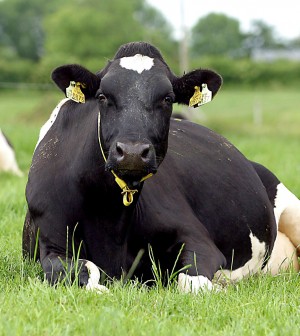Scientists discover ‘fat gene’ in cows
New Zealand-based co-op, Livestock Improvement Company (LIC) has discovered genetic variations which impact milk composition in dairy cows.
All cows have the ‘fat gene’, named AGPAT6, but LIC senior scientist Dr Matt Littlejohn says the variations they’ve discovered provide a genetic explanation as to why some cows produce higher fat content in their milk than others.
“If you think of milk production in the cow’s udder as a factory assembly line, this variation is one of a few workers in the ‘fat chain’, with that worker being very efficient in some cows, and a bit lazy in others.
“The finding of AGPAT6 helps us to better understand what goes on in a cow’s mammary gland and how milk composition is regulated by genes,” Dr Littlejohn said.
The discovery, which was recently published by the international scientific journal PLOS ONE, will now be used to help improve the accuracy of the farmer-owned co-operative’s genomic selection programme for AB sires and drive further genetic gain improvements of the NZ dairy herd.
The finding represents one of only a few cases worldwide where the underlying gene affecting differences in milk composition has been identified.
The variation was discovered as part of LIC’s DNA sequencing programme, which aims to map variations in genes in a cow’s DNA that can impact production and health. These variations will be used to improve the accuracy of genomic selection.
The sequencing programme has led to previous discoveries including the Small Calf Syndrome gene and one which causes loss of pregnancy in cows; it utilises a large sequencing dataset developed by LIC scientists and co-funded by the Ministry for Primary Industries through the Transforming the Dairy Value Chain Primary Growth Partnership programme, led by Fonterra and DairyNZ.
Dr Littlejohn says the sequencing work is a bit like putting together the pieces of a cow puzzle – the more you put together, the clearer the overall picture becomes for genomic selection and identification of which sires are likely to perform best.
“The real benefits will be realised as we pinpoint more genes and variations that we know exist. Stack them up together and you can have quite big effects, particularly when applied to genomic selection.”
